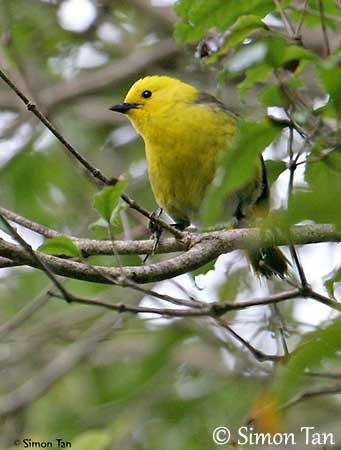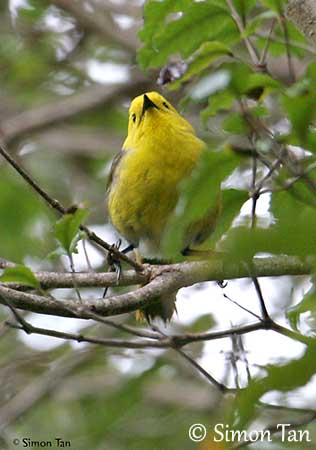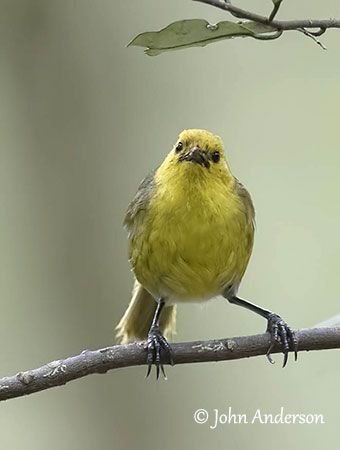
Fr: Mohoua à tête jaune
Ang: Yellowhead or Mohua
Maori: Mohua
All: Gelbköpfchen
Esp: Mohoua Cabecigualda
Ita: Testagialla della Nuova Zelanda
Nd: Mohoua
Sd: Gulmohoua
Photographers:
John Anderson
John Anderson Photo Galleries
Simon Tan
PBase Bird galleries
Text by Nicole Bouglouan
Sources:
HANDBOOK OF THE BIRDS OF THE WORLD Vol 12 by Josep del Hoyo-Andrew Elliott-David Christie - Lynx Edicions - ISBN: 8496553423
KNOW YOUR NEW ZEALAND BIRDS by Lynnette Moon - New Holland Publishers – ISBN: 1869660897
BirdLife International (BirdLife International)
New Zealand bird status between 2008 and 2012
New Zealand birds and birding (Narena Olliver)
Wikipedia, the free encyclopaedia
Te Ara – The Encyclopedia of New Zealand
Page family Mohouidae
Page Passeriformes Order
Yellowhead
Mohoua ochrocephala
Passeriformes Order – Mohouidae Family
INTRODUCTION:
The Yellowhead or Mohoua is a small forest bird endemic to New Zealand. Formerly located only on South Island in beech forest, it has now returned to Ulva Islands after eradication of mammal predators, especially rats. But it has been introduced to several other islands too.
Recent changes in the classification place this species in the family Mohouidae with the Whitehead and the New Zealand Brown Creeper or Pipipi.
DESCRIPTION OF THE BIRD:
Biometrics:
Length: 14-15 cm
Weight: 28-32 g
The adult has bright yellow head, neck, chin, throat and breast. Crown and nape may show some olive spotting.
The upperparts are olive-brown, mostly olive on uppertail-coverts. On the upperwing, the flight feathers are dark brown, with olive edges on the outer webs. The wing-coverts and the tail are yellowish-brown.
On the rest of the underparts, the belly is whitish, whereas breast sides, flanks and thighs are usually tinged pale brown. The undertail-coverts are white washed yellow.
Bill, legs and feet are black. The eyes are dark brown to blackish.

Both sexes can be similar, although female may have more mottled head.
The juvenile has more olive upperparts and paler underparts.
RANGE:
The Yellowhead is confined to beech forest on South Island and Stewart Island. It is present in several areas such as Fiordland, the Catlins, Blue Mountains, some parts of W Otago, the Landsborough Valley and Hawdon and Hurunui Valleys in Canterbury.
The species has been introduced to several predator-free islands in southern New Zealand.
HABITAT:
The Yellowhead frequents tall red and silver beech forest (Nothofagus menziesii and Nothofagus fusca), usually large patches with open understorey. It can be seen from the mountain valleys to 900 metres of elevation. The forests where this species is living are protected.
CALLS AND SONGS: SOUNDS BY XENO-CANTO
The Yellowhead male often utters a trill or a rapid shivering chatter including 6-8 musical notes. The alarm call is a scolding note.
During and after the incubation, the female produces descending buzzing calls.
Small flocks often move noisily through the forest while foraging for food.
BEHAVIOUR IN THE WILD:
The Yellowhead feeds primarily on invertebrates. It forages high in trees while gleaning insects among the foliage. It also searches for preys by scratching the loose bark, or mosses and ferns on tree trunks. It often scratches with one leg while hanging onto trunk or branch with the other leg, and it uses its tail as additional support. It also feeds on fruits and nectar. They form flocks of 3-40 individuals when foraging, and often join mixed-species groups.
During the breeding season, the Yellowhead becomes territorial. They are monogamous, but the pair has often one helper.
The courtship displays are nor described in detail, but some nuptial behaviour shows the male rocking back and forth with partially spread wings and tail and vibrating. This display can be followed by aerial chases, courtship feeding or copulation. The bright yellow feathers of the male are enhanced by these movements.
The Yellowhead is mainly sedentary, and only performs local seasonal and altitudinal movements, usually in flocks.
It is very agile when flitting from branch to branch while searching for invertebrates. However, they are poor fliers even over a few metres.

REPRODUCTION OF THIS SPECIES:
The breeding season occurs between October and February, with peak of laying in November/December.
The Yellowhead nests in cavities, usually between 2 and 15/30 metres above the ground. The nest is built by the female. This is a cup-shaped structure made with grasses, rootlets, twigs, and other plant materials. The cup is lined with feathers or softer vegetation. The cavity is often in tree trunk or stump.
The female lays 1-4 pale eggs with darker markings. She incubates alone or sometimes, two females share the incubation during 20-21 days. They are fed by the male during this period. The chicks are fed by both sexes and a helper if present. The juveniles leave the nest about 18-22 days after hatching, and still depend on adults for food for a few weeks more. They remain in family group for some time, but the female may initiate a second brood before the first has fledged.
The nest is sometimes parasitized by the Long-tailed Cuckoo (Eudynamys taitensis).
PROTECTION / MENACES / STATUS:
The Yellowhead is vulnerable to irruption of stoats at beech prolific seeds production every 4-6 years. The stoats take eggs, chicks and a number of adult females, involving heavy decrease in some populations. Other predators, mainly rats, caused serious population crashes too.
Conservation measures include intensive trapping for stoat control, and translocation of birds to habitats free of predators.
The population is estimated at 1,000/2,499 mature individuals. The Yellowhead is currently listed as Endangered.
